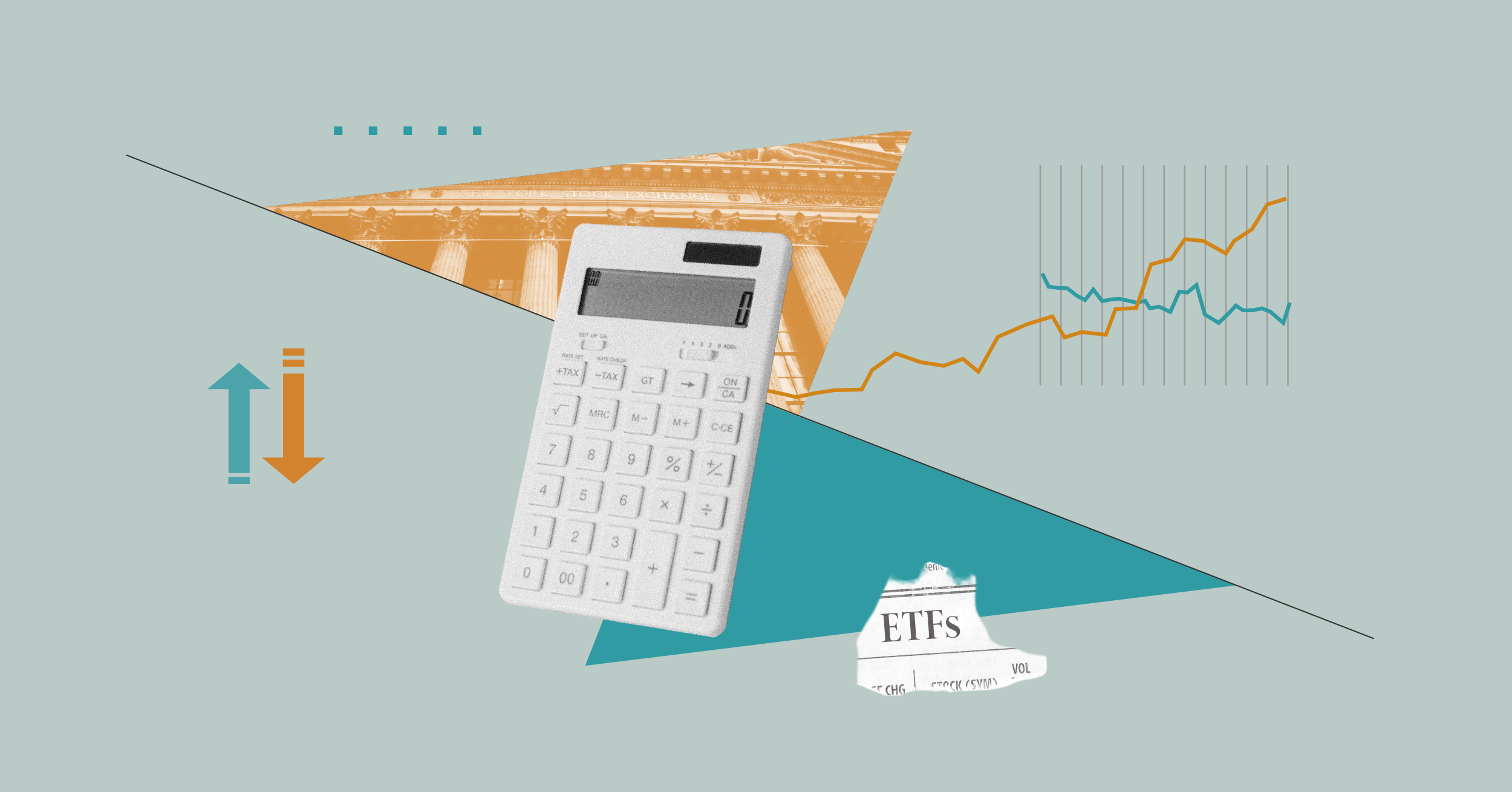Once you decide what type of investment account you'd like to open, the next nuts-and-bolts decision involves actually choosing a broker.
When thinking about a stockbroker, a picture of Charlie Sheen from the movie "Wall Street" often comes to mind. Thoughts of cold calls interrupting your dinner and pushy salesmen trying to sell the latest "hot stock" can scare investors away from buying stocks. In reality, however, it isn't so bad, and there are many options to choose from. In this lesson, we'll aim to provide the information you need to pick a broker that will help you reach your financial goals.
Think of a broker as the middleman between you and the person you are buying your stock from or selling your stock to. When you place an order to either buy or sell a stock, your broker will find a party that is willing to take the other side of your transaction. Of course, the broker will charge a fee (commission) for this service. There are hundreds of brokers and other financial advisers, and they provide varying levels of service. We'll focus on three types of service providers: full-service brokers, fee-based financial planners, and discount brokers.
Full-service brokers
Full-service brokers provide handholding through the investment process
that often gives investors reassurance that they are not going it alone.
They provide personalised service, as well as advice on what to buy and
sell. This is the greatest benefit to full-service brokers, but the
benefits can be outweighed by the costs--literally. This handholding
does not come cheap, and the commissions charged by a full-service
provider can quickly eat away at any investment gains your portfolio
makes. It is difficult enough to achieve success at investing; we don't
need another obstacle. We think investors would be well served to avoid
these high fees if possible.
Another concern with full-service brokers is the inherent conflict of interest that drives many of the recommendations they give clients. Many brokers are compensated by trading activity, not performance. For example, most full-service brokers are paid based on a commission they receive for executing sales and purchases. So the more you trade, the more your broker will make. One of the reasons frequent trading is generally a bad idea is that it leads to higher commissions that will eat into your returns. It can also cause you to pay higher taxes on realised short-term capital gains.
So while it is against your best interest to trade often, a full-service broker has an incentive to encourage frequent trading, just to rake in the fees. At the end of the day, even the well-intentioned commission-based brokers face a conflict with your interests. If you decide to use a full-service broker, make sure to seek out those upstanding professionals who are willing to look beyond this conflict and put your interests ahead of their own.
Fee-based planners
If you still find the need for personalised, professional investment
advice but want to avoid the conflicts of interest at full-service
brokers, fee-based planners can be a worthy consideration. Fee-based
planners usually charge their clients based on a variety of factors, and
the way they get paid does not have a large inherent conflict of
interest.
In general, planners and advisers get paid in one of three ways. First, they may charge you a percentage of your assets on an ongoing basis. Other planners charge a rate on a per-job or hourly basis. Finally, others earn commissions on any products they sell you. Some planners may use a combination of these fee structures--for example, a planner might charge you an hourly rate to set up your plan and also put you in funds on which he or she earns a commission. The upshot is that most planners do not have the incentive to encourage frequent trading, but they can be just as (if not more) expensive as full-service brokers.
Discount brokers
To avoid the pitfalls of full-service brokers and the costs of fee-based
planners, using a discount broker is often the best option. Discount
brokers differ from their full-service counterparts in that they offer
bare-bones brokerage services, and typically do not offer advice.
Investors with discount brokers don't have to worry about aggressive
sales tactics or the conflicts of interest we discussed above. Instead,
discount brokers allow investors to make their own decisions regarding
what to invest in.
Most importantly, the commissions that investors pay to discount brokers are significantly cheaper than the commissions charged by full-service brokers. And with the advent of the Internet, web-based discount brokers make it easier than ever for individuals to maintain their own stock portfolios. Although discount brokers make investing easier, picking which broker to use can be difficult. In the following sections, we'll tell you what to look for when choosing a discount broker.
Costs
When looking for a discount broker, cost should be a major focal point.
We've already established that discount brokers are significantly less
expensive than full-service brokers, but there is a wide range of price
options within the discount broker arena as well. Obviously, the less
you have to pay in commissions, the better. But there are also many
other factors you should consider. Many brokers charge lower per-trade
commissions for "active traders." For example, a brokerage house can
require that investors make more than 20 or 30 trades a quarter or month
before they qualify for the lower commissions. We've said it before and
we'll say it again: All else equal, frequent trading will eat away at
your returns over the long run.
Peripheral services
Brokers sometimes charge higher commissions because they offer investors
a variety of other useful services. For example, many brokerages offer
third-party research for stocks.
Although we think most investors are capable of making their own investment decisions, even the most experienced investors will eventually have a question or two about their accounts. This is why it's important to look for a broker that provides good customer service. It's certainly worthwhile to look into a broker's customer service before making a decision.
A more recent trend is for brokers to also provide other financial services, such as retail banking (current and savings accounts) and loans. These services may be attractive for those looking for a "one-stop shop" for all their financial needs. The range of these services can vary, but they are also worth looking into.
After you've opened an account with your broker of choice, you have a variety of investing options and strategies at your fingertips. At Morningstar, we believe that a long-term investing strategy is the best way to achieve financial success, but it is important to understand some of the mechanics and options involved in trading and investing in stocks.
Market and limit orders
Investors can trade stocks through a broker using several methods, some
of which offer them more control or the opportunity to juice their
returns--with added risk, of course.
Placing an order to buy or sell shares of a company is relatively straightforward. There are various methods you can use, however, if you want to execute a trade at a specific price.
A market order is the most straightforward method of placing a trade. A market order tells the broker to buy or sell at the best price he or she can get in the market, and the trades are usually executed immediately. Since we recommend a long-term investing philosophy, fretting over a few pennies here and there doesn't make sense to us, and a market order is best in most cases.
A limit order means you can set the maximum price you are willing to pay for a stock, or a minimum price you'd be willing to sell a stock for. If the stock is trading anywhere below your maximum purchase price, or above the minimum selling price, the trade will be executed. However, because there are limitations when a limit order is placed, the trade might not be executed immediately. Also, some brokers charge extra when a limit order is requested.
Buying on margin
Buying on margin is a risky way to pump up the potential return on your
investment. Margin trades involve borrowing money from your broker to
purchase an investment. Let's run through an example of how buying on
margin can be profitable and also how it can be a risky game:
Let's say you want to buy 100 shares of fictional company Illini Footballs. Each share costs £10, so your total cost would be £1,000 (we'll ignore commissions for now). If those shares go up to £12 after you buy, your return would be 20%, or £200 (100 shares x £2 per share profit).
Now let's say you bought those 100 shares on margin. Instead of using £1,000 of your own money, you borrow £500 and use only £500 of your own money. Now if the stock goes up to £12, your return jumps to 40% (£200 profit/£500 initial investment).
Of course nothing is free, so you'd have to pay interest on the £500 you borrowed. Nevertheless, it's easy to see how buying shares of a company on margin can really juice your returns. But below is an example of how buying on margin can turn ugly. We'll use the same example as above, but with a twist:
You've borrowed £500 and used £500 of your own money to buy 100 shares of Illini Footballs at £10. If Illini's shares drop to £8, you've suddenly lost 40% of your investment, and you still owe your broker the £500 it lent you.
If stock bought on margin keeps going down, you might even eventually get a dreaded "margin call." This means your broker is getting nervous that you might not have enough money to pay back the loan. If you get a margin call, you'd have to contribute more cash to your account, or sell some of your stocks to reduce your loan. Typically, these sales happen at precisely the wrong time--when stocks are down and at bargain-basement prices. Brokerage houses usually have set requirements that dictate how much of your own cash you need to have in your portfolio when trading on margin. Buying on margin is not for beginners, so tread carefully.
Shorting
It may sound funny, but investors can actually profit when a stock goes
down in price. Shorting stocks involves selling borrowed shares with the
intent of repurchasing them at a lower price. Instead of trying to buy
low and sell high, you are simply reversing the order. Once again, let's
go through an example:
You've been tracking fictional company Badgers Bricks PLC and think its newest products are going to flop. The company is already on the ropes financially, and you think that this may be the last straw. You decide to short 100 shares of the company. After an order to short Badgers Bricks' stock is placed, your broker will find 100 shares that it can lend to you. You immediately sell those shares on the marketplace for £10 and receive proceeds of £1,000. If the stock drops to £8, you can buy the shares for £800 and return them to your broker. Your profit is £200 (£1,000 minus £800).
This sounds easy enough, but no investment is foolproof. If you make the wrong bet when short-selling a stock, your downside is potentially unlimited. In a best-case scenario, the stock you short will go down to £0 and your profit equals all the cash you received from selling the borrowed shares. On the downside, the stock you short could increase in price, and there is no limit on how high it may go. Remember, those shares are borrowed and eventually will have to be returned. If the price keeps going up, you'll be stuck paying a lot more to buy the stock back, perhaps much more than you could have made if the stock went to zero. The important thing to remember is that the potential downside in shorting stocks is unlimited. As with buying on margin, be careful.
The bottom line
The mechanics of trading are really not very difficult to grasp. But to
be a successful investor, it is certainly worthwhile to use financial
services wisely by paying attention to fees and commissions, which will
inevitably eat into your returns. Minimising your fees is an extremely
worthwhile endeavour.
























